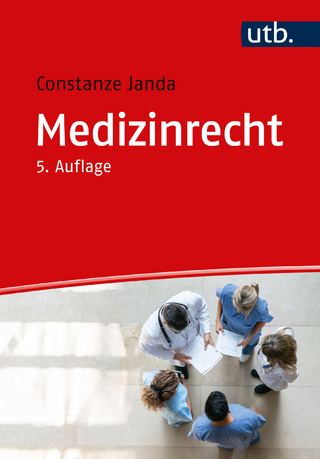
Legal Considerations for Fire & Emergency Services
Fire Engineering Books (Verlag)
978-1-59370-576-3 (ISBN)
- Titel z.Zt. nicht lieferbar
- Versandkostenfrei innerhalb Deutschlands
- Auch auf Rechnung
- Verfügbarkeit in der Filiale vor Ort prüfen
- Artikel merken
THE LAW HAS EVOLVED & SO HAS LEGAL CONSIDERATIONS The long-awaited 4th edition of Legal Considerations for Fire & Emergency Services is an essential textbook for any course on fire service law as well as an indispensable desk reference for day-to-day fire department administration.
Author J. Curtis Varone, a practicing attorney and experienced firefighter explores comprehensive coverage of the major legal issues in the fire and EMS services, such as:
Negligence
Immunity
Criminal law
Arson
Search and seizure
FLSA wage and hour overtime issues
Employment discrimination
Sexual harassment
FMLA
Americans with Disabilities Act
Public records laws
Open meetings requirements
Drug testing
Due process
Collective bargaining
OSHA and the relationship between NFPA standards and OSHA enforcement
EMS-related topics such as consent, DNR orders, living wills, durable powers of attorney for healthcare decisions, and refusals against medical advice
J. Curtis Varone has been in the fire service since 1972 with experience in career, combination, and volunteer fire departments. He has been a practicing attorney representing firefighters and fire departments since 1985. Curt retired from the Providence (RI) Fire Department in 2008 as a deputy assistant chief and now serves as deputy fire chief of his hometown of Exeter, Rhode Island. For more information, visit firelawblog.com.
Preface
Acknowledgments
Fire and Emergency Services Higher Education (FESHE) Correlations Grid
Introduction
Chapter 1: TYPES AND SOURCES OF LAWS
1.1 Introduction
1.2 What Is “The Law”?
1.3 Where Do Laws Come From?
1.4 Standards and Codes
1.5 Civil versus Criminal
1.6 Jurisdiction
Summary
Review Questions
Discussion Questions
Chapter 2: COURTS AND COURT SYSTEMS
2.1 Introduction
2.2 Courts in General
2.3 Jurisdiction
2.4 Trial Courts and Appellate Courts
2.5 Evidence
2.6 Anatomy of a Civil Lawsuit
2.7 Federal Court System
2.8 State Courts
2.9 Stare Decisis and Precedence
2.10 How “Decisis” Is “Decisis”?
2.11 Lawsuits and the Media
2.12 Legal Research
2.13 Legal Arguments
Summary
Review Questions
Discussion Questions
Chapter 3: TYPES OF FIRE DEPARTMENTS
3.1 Introduction
3.2 What Is a Fire Department?
3.3 The Role of a Fire Department
3.4 Public Sector versus Private Sector
3.5 Types of Entities
3.6 Public Sector Fire Organizations
3.7 Private Sector Fire Organizations
3.8 Conclusions on Fire Department Authority
3.9 Volunteer Fire Company Authority
Summary
Review Questions
Discussion Questions
Chapter 4: ADMINISTRATIVE AGENCIES
4.1 Introduction
4.2 Administrative Agencies
4.3 Occupational Safety and Health Administration
4.4 Getting the Job Done
4.5 OSHA Inspections
4.6 Occupational Safety and Health Review Commission
4.7 OSHRC and OSHA
4.8 OSHA Violations and Sanctions
4.9 Administrative Agencies and Separation of Powers
4.10 Exhaustion of Remedies
4.11 Jurisdiction and the Term “OSHA State”
4.12 State and Local Agencies
4.13 Administrative Law Making
4.14 OSHA and the NFPA Standards
4.15 Application of OSHA to Volunteers and Part-Time Personnel
Summary
Review Questions
Discussion Questions
Chapter 5: CRIMINAL LAW
5.1 Introduction
5.2 Statutory and Common-Law Crimes
5.3 Federal versus State Jurisdiction
5.4 Crimes Must Be Specifically Declared to Be Criminal
5.5 Felonies and Misdemeanors
5.6 Elements
5.7 Criminal Offenses
Summary
Review Questions
Discussion Questions
Chapter 6: CRIMINAL PROCEDURE
6.1 Introduction
6.2 What Is an Arrest?
6.3 Authority to Make an Arrest
6.4 Asserting the Authority
6.5 False Arrest
6.6 Firefighters and Arrest Powers
6.7 Arrest Warrants
6.8 Criminal Procedure
6.9 Search and Seizure
6.10 Chain of Custody
6.11 Custodial Interrogations and Miranda Warnings
6.12 Accomplice Liability: Parties to a Crime
6.13 Conspiracy
6.14 Attempts
6.15 Criminal Defenses
Summary
Review Questions
Discussion Questions
Chapter 7: CIVIL LIABILITY ISSUES
7.1 Introduction
7.2 Intentional Torts
7.3 Battery
7.4 Assault
7.5 False Imprisonment
7.6 Intentional Infliction of Severe Emotional Distress
7.7 Trespass to Land
7.8 Trespass to Chattels
7.9 Conversion
7.10 Misrepresentation
7.11 Bad Faith
7.12 Defamation
7.13 Invasion of Privacy
Summary
Review Questions
Discussion Questions
Chapter 8: NEGLIGENCE
8.1 Introduction
8.2 Elements of Negligence
8.3 Fire Service Negligence Cases
8.4 Emergency Medical Care and Negligence
8.5 Beyond Negligence
8.6 Defenses to Negligence
8.7 Strict Liability
8.8 Respondeat Superior
8.9 Joint Liability
Summary
Review Questions
Discussion Questions
Chapter 9: IMMUNITY FROM LIABILITY
9.1 Introduction
9.2 Tort Claims Acts
9.3 Discretionary versus Functionary Acts
9.4 What Is Discretion?
9.5 The Other Distinction: Governmental Versus Proprietary
9.6 Statutory Immunity
9.7 Volunteer Protection Act
9.8 Private Nonprofit Volunteer Fire Companies
9.9 Limitations on Immunity
9.10 The Flip Side of the Special Duty
Exception: The Public Duty Doctrine
Summary
Review Questions
Discussion Questions
Chapter 10: CONTRACT LAW AND EMPLOYMENT ISSUES
10.1 Introduction
10.2 Offer and Acceptance
10.3 Contract Formality
10.4 Breach and Damages
10.5 Authority to Contract
10.6 Void or Voidable Agreements
10.7 Promissory Estoppel
10.8 Fire Service Contracts
10.9 Mutual Aid Agreements
10.10 Insurance Policies
10.11 Purchasing
10.12 Employment Agreements
10.13 Workers’ Compensation
Summary
Review Questions
Discussion Questions
Chapter 11: LABOR LAW AND COLLECTIVE BARGAINING
11.1 Introduction
11.2 Collective Bargaining
11.3 Private Sector versus Public Sector
11.4 Labor Relations Acts
11.5 Good-Faith Bargaining
11.6 Impasse Disputes
11.7 Scope of Bargaining
11.8 Impact Bargaining
11.9 Unilateral Changes to Mandatory Subjects
11.10 Past Practices
11.11 Union Security Provisions
11.12 Duty of Fair Representation
11.13 Strikes, Slowdowns, Picketing, and Concerted Job Actions
11.14 Weingarten Rights
11.15 Garrity Rights
Summary
Review Questions
Discussion Questions
Chapter 12: EMPLOYEE RIGHTS AND DISCRIMINATION
12.1 Introduction
12.2 Constitutional Rights
12.3 Civil Rights Laws
12.4 What Is Discrimination?
12.5 Proof of Discrimination
12.6 Procedural Issues in Employment Discrimination
12.7 Affirmative Action—Equal Opportunity
12.8 Standard of Review for Constitutional Claims of Discrimination
12.9 Americans with Disabilities Act of 1990 (ADA)
12.10 State Law Disability Discrimination
12.11 Age Discrimination
Summary
Review Questions
Discussion Questions
Chapter 13: SEXUAL HARASSMENT AND OTHER FORMS OF EMPLOYMENT DISCRIMINATION
13.1 Introduction
13.2 Sexual Harassment
13.3 Pregnancy Discrimination
13.4 Religious Accommodation
13.5 Clothing, Uniforms, and Grooming Issues
13.6 Tattoos, Body Piercings, and Related Issues
Summary
Review Questions
Discussion Questions
Chapter 14: FAIR LABOR, FAMILY MEDICAL LEAVE, RESIDENCY, DRUG TESTING, ELECTRONIC MONITORING, DIGITAL IMAGERY, AND SOCIAL NETWORKING
14.1 Introduction
14.2 Fair Labor Standards Act
14.3 Family Medical Leave
14.4 Residency Requirements
14.5 Drug Testing
14.6 Electronic Monitoring in the Workplace
14.7 Digital Imagery and Social Networking
Review Questions
Discussion Questions
Summary
Chapter 15: PUBLIC ACCOUNTABILITY LAWS
15.1 Introduction
15.2 Conflicts of Interest and Ethical Codes
15.3 Open Government Laws
15.4 Whistleblower Acts and Provisions
Summary
Review Questions
Discussion Questions
Chapter 16: EMS LAW
16.1 Introduction
16.2 Law Governing EMS
16.3 Assault—Battery—Consent— Capacity
16.4 Negligence and the Standard of Care for EMS
16.5 Immunity
16.6 Confidentiality of Medical Information
Summary
Review Questions
Discussion Questions
Appendix A: CONSTITUTION OF THE UNITED STATES OF AMERICA
Appendix B: FOR FURTHER REFERENCE
Glossary
Index
| Erscheinungsdatum | 04.01.2022 |
|---|---|
| Sprache | englisch |
| Maße | 175 x 254 mm |
| Gewicht | 1720 g |
| Themenwelt | Recht / Steuern ► Allgemeines / Lexika |
| Recht / Steuern ► EU / Internationales Recht | |
| Recht / Steuern ► Privatrecht / Bürgerliches Recht ► Medizinrecht | |
| Sozialwissenschaften ► Soziologie | |
| Technik ► Bauwesen | |
| ISBN-10 | 1-59370-576-X / 159370576X |
| ISBN-13 | 978-1-59370-576-3 / 9781593705763 |
| Zustand | Neuware |
| Haben Sie eine Frage zum Produkt? |
aus dem Bereich


